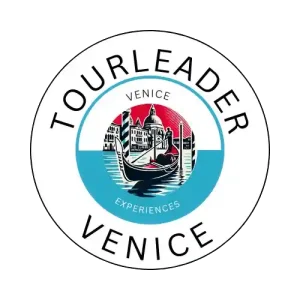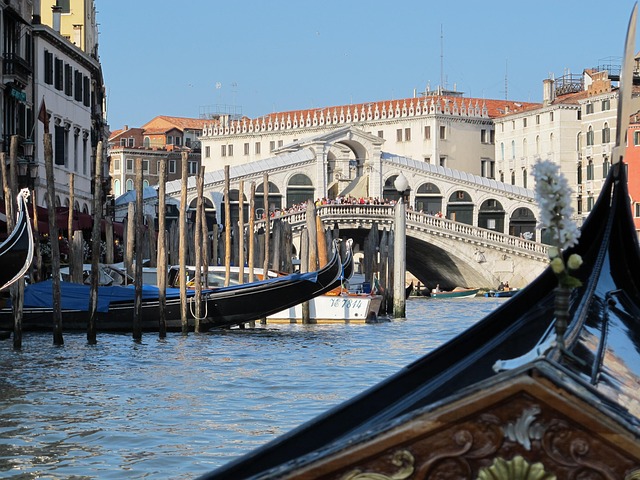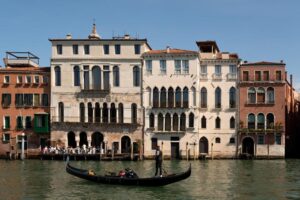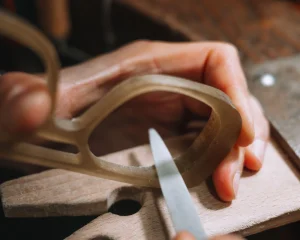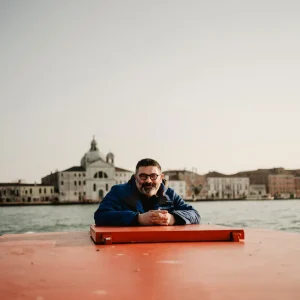7 Venetian Inventions That Changed the World 🌍✨
Venice isn’t just about canals, gondolas, and spritz. For centuries, this floating city was a laboratory of ideas — a place where artisans, merchants, and dreamers quietly reshaped the world. Behind the shimmering facades and poetic sunsets lies a history of wild creativity, technical mastery, and pure human audacity.
From glassmaking to publishing, from hydraulic engineering to the invention of eyeglasses (yes, really 👓), Venice has always been ahead of its time. This is the story of how a small city built on water became one of history’s greatest engines of innovation — told with the curiosity of locals who still walk those same alleys today.
Let’s explore the Venetian inventions and innovations that transformed the world — one idea, one artisan, and one stroke of genius at a time. 🏛️
1️⃣ Eyeglasses 👓 — A Clear Venetian Vision
Let’s start with something you’re probably wearing right now — eyeglasses. Yes, you can thank Venice for helping humanity see the world more clearly.
The story begins in the late 13th century, when monks and scholars across Europe were squinting at their manuscripts by candlelight. Somewhere between 1280 and 1300, Venetian glassmakers — already masters of precision — began experimenting with convex lenses to magnify text. It was a small leap in technology, but a giant step for human civilization.
Venice was perfectly positioned for this breakthrough: it had the best glass in Europe, the most curious minds, and a culture that adored experimentation. The result? The world’s first wearable spectacles — two round lenses joined by a bridge that could rest on the nose.
And we actually have proof. In 1352, the painter Tommaso da Modena created a fresco in nearby Treviso depicting a monk wearing spectacles — the first known image of eyeglasses in history. 🖼️
From then on, Venetian glassmakers became the unseen heroes of vision. Their workshops crafted lenses not just for monks but for explorers, doctors, astronomers, and, eventually, everyone reading this article on their phone.
👉 Curious to meet the descendants of those early geniuses? Join our Bespoke Eyewear Experience in Venice — where artisans still handcraft glasses that blend tradition, innovation, and style.
2️⃣ Glassmaking 🔥 — Turning Sand into Gold
If Venice had a signature superpower, it would be turning sand into beauty. Since the 13th century, Murano glassmakers have been the rockstars of the lagoon — half artists, half alchemists.
When the city realized that open-flame furnaces were a fire hazard, all glass production was moved to the island of Murano. But the real reason was even smarter: it kept the trade secrets safely contained.
And those secrets were worth guarding. Murano masters invented:
- Cristallo — the first perfectly clear glass, unmatched for centuries.
- Enamelled glass and gold-leaf decoration that dazzled the courts of Europe.
- Millefiori (a “thousand flowers”) patterns — colorful mosaics captured inside molten glass.
- And, yes, mirrors so pure they sparked envy in Versailles.
Venetian glass was so precious that exporting techniques was punishable by death. Yet despite the secrecy, its influence spread everywhere — inspiring generations of designers, jewelers, and dreamers.
👉 Step into this luminous world with our Murano Glass Workshop & Visit, or take it further and create your own glass bead during a hands-on session with authentic Murano artisans.
3️⃣ The Printing Revolution 📚 — How Venice Taught the World to Read
Before Venice, books were a luxury reserved for monasteries and princes. Each one was copied by hand, often taking months — or years — to complete. Then came Aldus Manutius, a visionary printer who transformed how humanity shared knowledge.
In 1494, Aldus founded the Aldine Press right here in Venice. His innovations were revolutionary:
- He invented italic type — elegant, compact, and perfect for portable books.
- He introduced the octavo format — small enough to fit in your hand or pocket (the ancestor of the paperback!).
- He published classics in their original Greek and Latin, fueling the Renaissance’s thirst for knowledge.
Venice quickly became Europe’s printing capital. By 1500, over 200 printing presses hummed across the city, producing books faster than any other place in the world. The democratization of reading had begun — and it started right here, among the canals.
👉 Walk through the historic printing quarter with our Hidden Venice & Artisan Walking Tour, where we’ll trace Aldus’s legacy from quiet courtyards to the heart of intellectual Europe.
4️⃣ Hydraulic Engineering 🌊 — Mastering the Lagoon
Venice is often romanticized as fragile — a city “sinking” gracefully into the sea. But in truth, it’s a triumph of hydraulic genius. For over a millennium, Venetians have not just survived on water — they’ve engineered it, controlled it, and lived in perfect rhythm with it.
They mastered the impossible with a series of innovations that still defy logic:
- Driving millions of wooden piles deep into the mud, creating solid foundations that haven’t budged in centuries.
- Dredging canals to maintain depth and flow — a continuous, centuries-long balancing act between nature and design.
- Building sea walls, jetties, and locks to protect the delicate lagoon from erosion and tides.
These medieval engineers were so advanced that their methods inspired projects across Europe — from Dutch dikes to British dockyards. Even today, scientists study Venice’s construction to understand how to build sustainably with nature, not against it.
👉 Curious how this miracle of wood and water works? Read our in-depth article How Venice Was Built on Water — it’s one of the wildest true stories in architecture.
5️⃣ Commerce & Insurance 💰 — The Birth of Modern Trade Systems
Before Wall Street, before the City of London, there was Venice — a city that practically invented the global economy.
By the 14th century, Venetian merchants were sailing from Alexandria to Antwerp, trading everything from silk and spices to salt and sugar. But global trade meant global risks — storms, shipwrecks, piracy. So the Venetians came up with brilliant solutions that still define finance today:
- Bills of exchange — the medieval version of a wire transfer, allowing merchants to move money safely across borders without carrying gold.
- Marine insurance — covering ships and cargo long before Lloyd’s of London existed.
- Merchant partnerships and joint ventures — the ancestors of modern corporations.
These systems not only made Venice rich — they created a template for capitalism itself. In many ways, your credit card, your bank, even your travel insurance all trace their DNA back to Venetian trade routes.
👉 Learn how merchants once ruled the waves with our Venice Lagoon Discovery Tour — following the same waterways that once carried the wealth of the world.
6️⃣ Cartography & Navigation 🧭 — Mapping the Known World
Long before Google Maps, Venetian sailors were the original navigators of the Mediterranean. Their maps — called portolani — were masterpieces of both science and storytelling, drawn from firsthand voyages and astronomical observations.
Venetian mapmakers created charts so precise that European explorers relied on them for centuries. These maps didn’t just show coastlines — they showed wind directions, safe harbors, and trade winds. They were, quite literally, the GPS of the Middle Ages.
Meanwhile, the Venetian Arsenal (Arsenale) — a vast shipyard the size of a small city — churned out vessels with assembly-line efficiency. In its peak years, it could build an entire galley in a single day. Imagine 16th-century workers operating like Silicon Valley engineers, only with hammers and oak beams.
👉 Explore the Arsenale district with our Hidden Venice Tour and step into the birthplace of nautical innovation and the “engine room” of a maritime empire.
7️⃣ The Biennale Concept 🎨 — Reinventing Global Art Exhibitions
Even after the age of empires, Venice couldn’t stop innovating. In 1895, it gave birth to a new idea: the Venice Biennale — a recurring international art exhibition designed to celebrate creativity on a global scale.
Its format was revolutionary: national pavilions within a shared space, where countries could showcase their best artists side by side. That idea spread like wildfire — inspiring today’s art fairs, architecture biennales, and cultural expos around the world, from São Paulo to Seoul.
For artists, the Biennale remains a dream stage. For visitors, it’s a sensory overload of ideas, imagination, and emotion — a living tribute to Venice’s creative DNA.
👉 Visiting during Biennale season? Don’t miss our Art & Architecture Tours — led by locals who know how to navigate the maze of installations and hidden gems beyond the crowds.
⚙️ Bonus: Innovation Beyond Time — Venice’s Modern Legacy
Venice’s spirit of invention never stopped. Today, its artisans still blend heritage and experimentation in everything they create — from sustainable materials to high design.
Local workshops are reviving forgotten crafts: letterpress printing, mask-making, and textile weaving at Tessitura Bevilacqua — all with a contemporary twist.
And in the world of technology, Venice continues to inspire sustainable architecture, flood management, and design thinking. The city that once mastered living with water may yet hold the key to the planet’s environmental future.
✨ Final Thought
For a city built on mud and water, Venice has shaped the world in ways no one could have imagined. From eyeglasses that changed how we see to printing that changed how we think, from Murano glass that still dazzles royal families to the Biennale that defines global art — Venice’s fingerprints are everywhere.
It’s proof that even a small, isolated city can change history — not with armies, but with ideas. 💡
So next time you wander its alleys, remember: behind every bridge and workshop lies a legacy of brilliance. The inventions born here didn’t just decorate the world — they redefined it.
🚤 Explore Venice’s Genius with Our Private Tours 🚤
For more Venetian stories that blend history and magic, don’t miss:
- How Venice Was Built on Water
- Venice Beyond the Biennale — Art All Year Round
- Hidden Gems of Venice Only Locals Know About
- Venice for First Timers
Venice isn’t just a museum of the past — it’s a living engine of imagination. And that, perhaps, is its greatest invention of all. 🇮🇹✨
What inventions is Venice famous for?
Venice gave the world far more than gondolas and glass. The city invented eyeglasses, revolutionized printing, perfected Murano glassmaking, pioneered modern banking and insurance, mastered hydraulic engineering, produced world-leading maps, and even created the concept of the modern art Biennale. Every invention reflected the same Venetian genius — beauty with purpose.
Why did so many innovations start in Venice?
Because Venice was a crossroads of cultures, ideas, and ambition. Surrounded by water yet connected to the world through trade, Venetians learned to think differently. Merchants, artisans, and scholars worked side by side, turning the lagoon into a laboratory of creativity. Innovation wasn’t a luxury here — it was survival, and it shaped everything from architecture to art.
Can i experiencthese inventions during my visit to Venice?
Absolutely. You can visit Murano for a live glassblowing demonstration, explore the old printing quarters on a hidden-Venice walk, admire maps and instruments at the Arsenale, or attend the Venice Biennale. For a deeper dive, join our Venice Hands-On Workshop and Art & Architecture Tours — experiences that bring Venice’s inventions and imagination to life.
